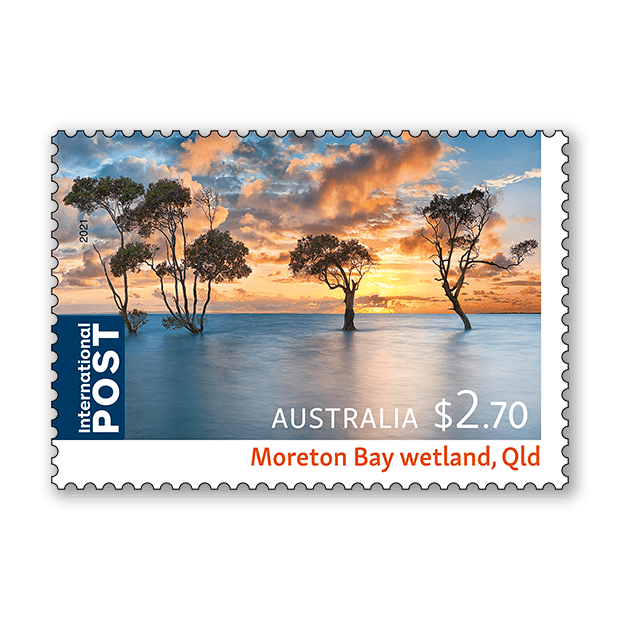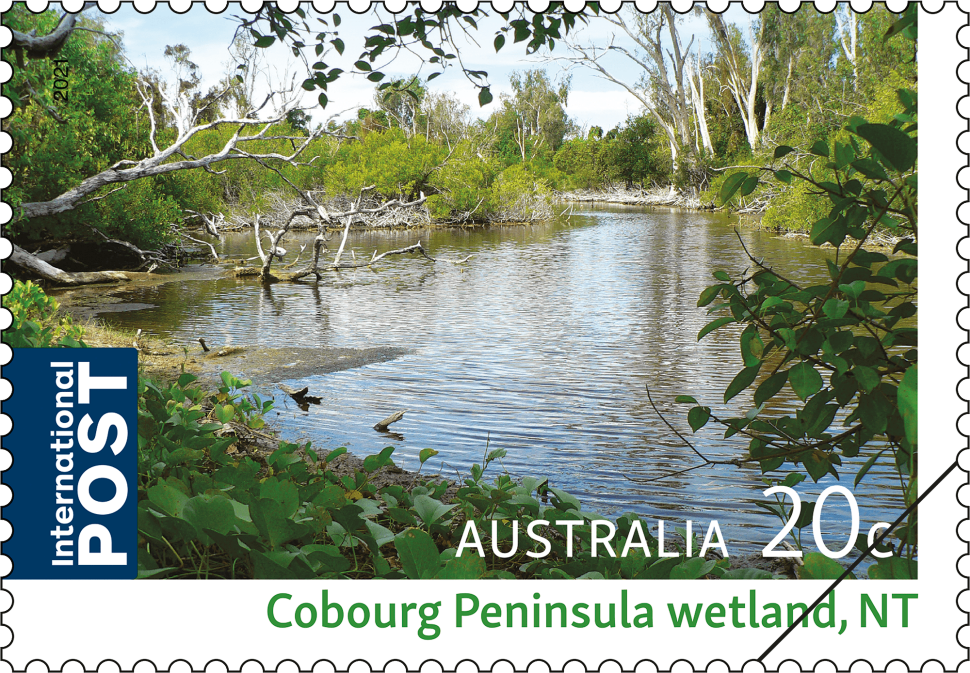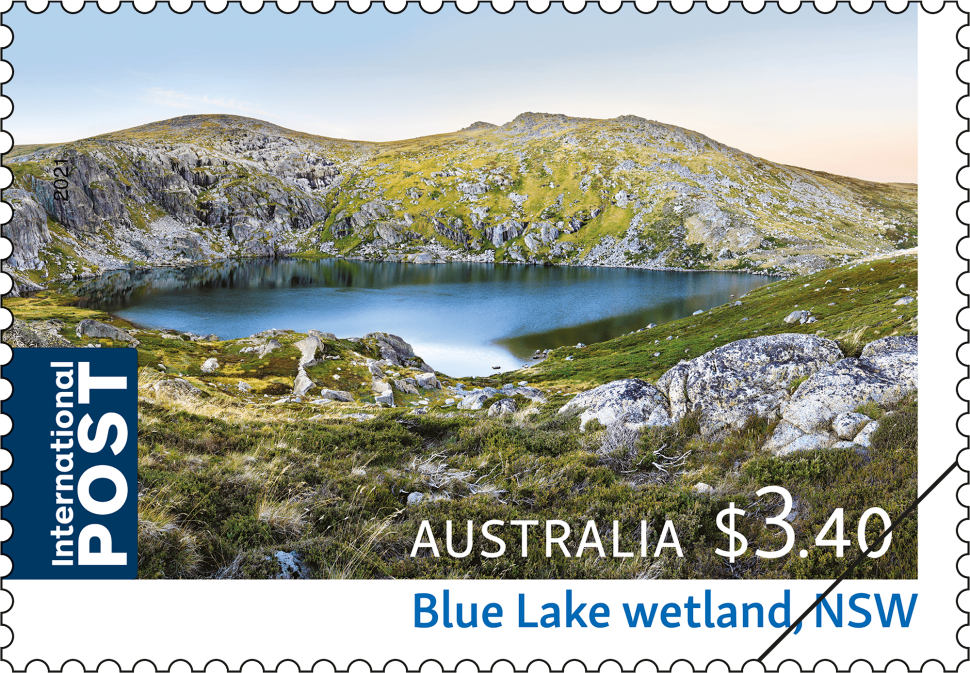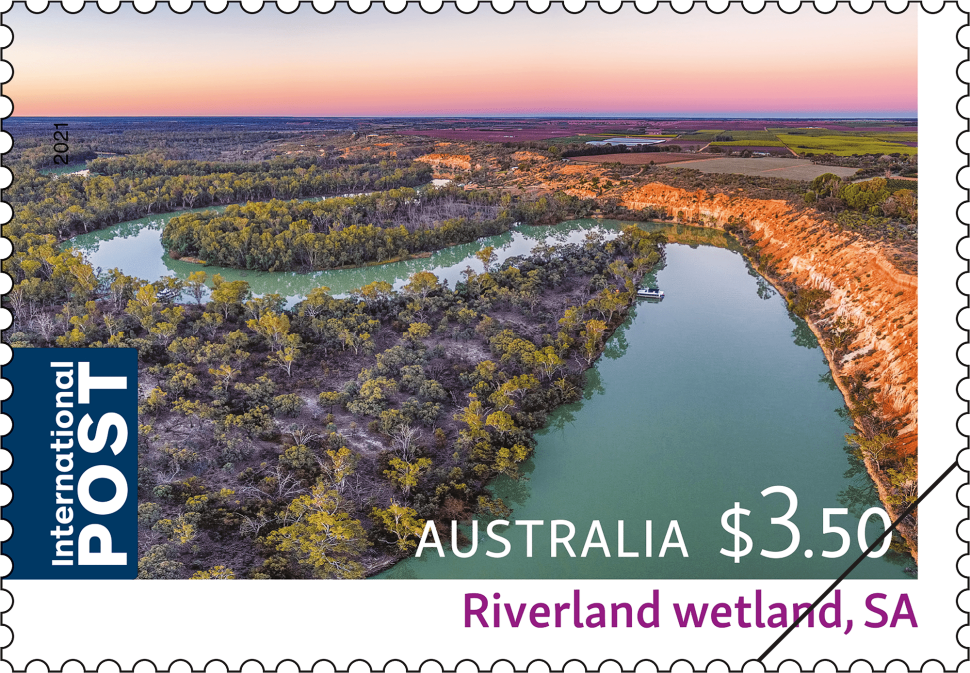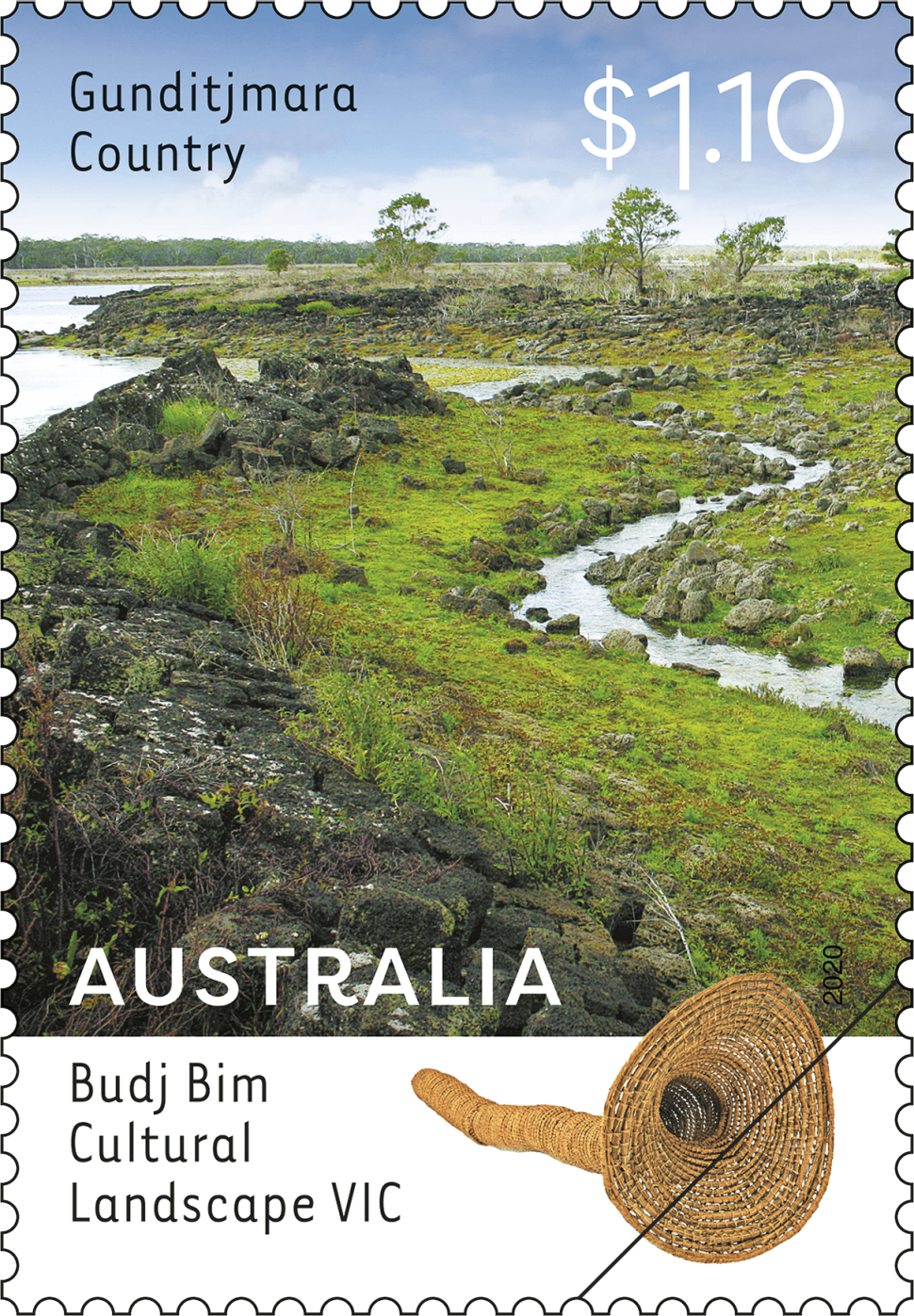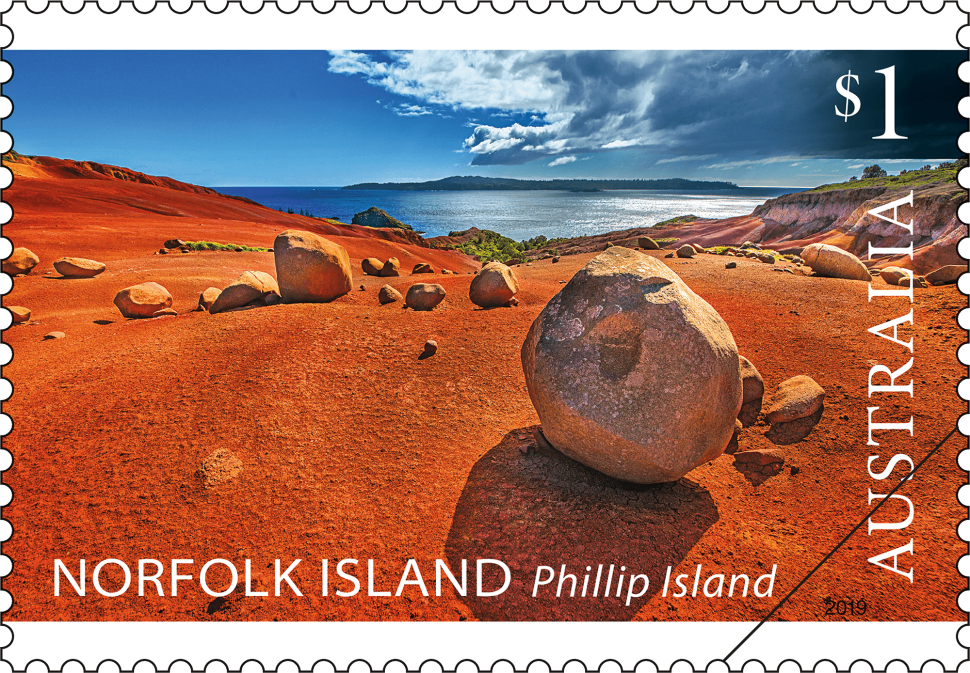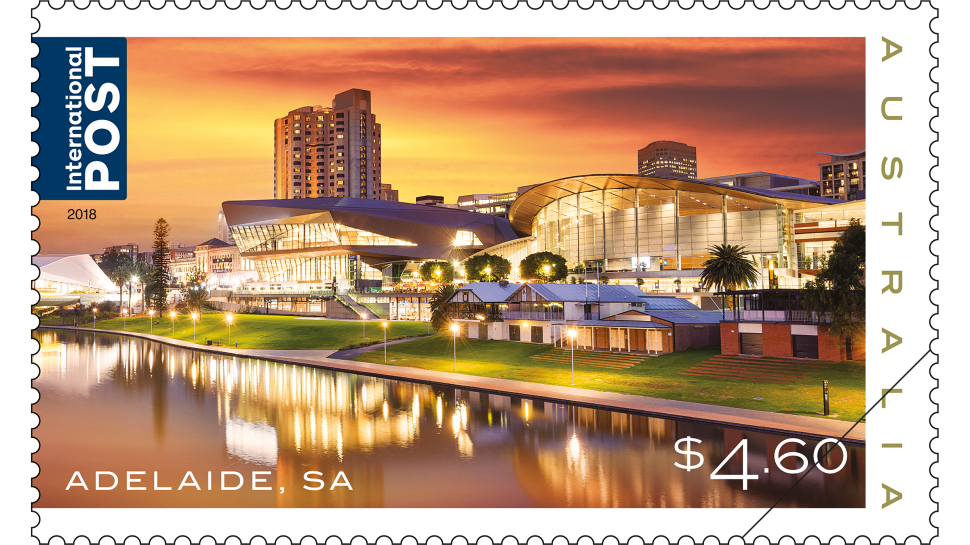Overview
Wetlands are vital to environmental and human health. These highly productive ecosystems sustain biological diversity, provide flora and fauna habitat, improve water quality, replenish groundwater, store carbon, protect against erosion and regulate flood peaks and storm surges. Some are popular sites for recreation, such as boating, hiking and fishing, as well as places of cultural significance for Aboriginal and Torres Strait Islander peoples.
Australia is one of the five co-founding nations of the Ramsar Convention on Wetlands of International Importance, signed on 2 February 1971. This international convention recognises important wetlands around the globe and was the first modern intergovernmental treaty aimed at conserving natural resources. The convention seeks to halt the loss of wetlands across the world. Fifty years after the founding of the convention, it is supported by 171 nations.
Marking the 50th anniversary of the Ramsar Convention, the stamps in this issue illustrate some of the diversity of wetland types in Australia; the sites represented occur in three states and one territory.
Technical specifications
- Issue date
- 22 February 2021
- Issue withdrawal date
- tba
- Denomination
- 20c x 1, $2.70 x 1, $3.40 x 1, $3.50 x 1
- Stamp design
- Sonia Young, Australia Post Design Studio
- Product design
- Sonia Young, Australia Post Design Studio
- Paper: gummed
- Tullis Russell
- Paper: self-adhesive
- Blue PVA (Tullis Russell Red Phos. PSA)
- Printer
- EGO
- Printing process
- Offset lithography
- Stamp size (mm)
- 37.5 x 26
- Perforations
- 13.86 x 14.6
- Sheet layout
- Module of 50
- FDI Postmark
- Canberra ACT 2601
- FDI withdrawal date
- 22 March 2021
Some 200 kilometres north-east of Darwin, the Cobourg Peninsula site on Australia’s northern coast encompasses all wetlands on the peninsula and nearby islands. It is large at 220,700 hectares, with diverse habitats and connectivity between its various wetland types. It incorporates seagrass, tidal flats, saltmarsh, mangroves, coral, beaches and dunes that support fish (including 14 at-risk marine fauna species), sea turtles and birds, including migratory waterbirds. The Arrarrkbi people, on whose country the wetland is located, uphold traditional land-management practices, customary law and traditions, and they jointly manage the site with government.
Stamp photograph: Jeanette Muirhead, Department of Agriculture, Water and Environment
The diverse wetland of Moreton Bay is located within and around Moreton Bay, north-east, east and south-east of Brisbane. A site of 120,654 hectares, it is set in a semi-enclosed basin, with sizeable sand islands to its east and an estuarine coast to its west. The wetland includes freshwater, intertidal and marine areas, with creeks, bays, islands, beaches, mangroves, coral, seagrass and mudflats. These habitats support a range of wildlife species, including fish, turtles, dugong, crustaceans, seabirds and migratory shorebirds – regularly supporting as many as 50,000 waterbirds. The site is a popular location for boating, fishing and bushwalking, and a hub for tourism and seafood production.
Stamp photograph: Bruce Hood Photography
Blue Lake is a 338-hectare site nestled in the Kosciuszko National Park, about 3.5 kilometres north-west of Charlottes Pass in the Australian Alps. A clear, freshwater lake with a depth up to 28 metres, it is the deepest of Australia’s four cirque lakes and was forged by glacial gouging of the granite bedrock. It is frozen for around four months each year. Blue Lake is a rare example of near-natural alpine wetland and is home to several species of at-risk flora, (including the Anemone Buttercup and Snow-wort) and endangered fauna, (such as the Mountain Pygmy Possum and Alpine Tree Frog.)
Stamp photograph: Michael Boniwell, Chockstone Photography
This 30,640-hectare Ramsar site is on the floodplain of an 80-kilometre stretch of the River Murray, between the South Australian town of Renmark and the state borders with Victoria and New South Wales. The area, which encompasses Chowilla and Ral Ral Creeks, provides habitat for several at-risk species, including Regent Parrot, Murray Cod, Murray River Turtle and Southern Bell Frog, as well as large numbers of waterbirds. In addition to supporting stock grazing and tourism, the Riverland is frequently used for bushwalking, fishing, camping and house-boating.
Stamp photograph: Tsvbrav/iStock/Getty Images
Shop our stamp collectables
Set of stamps:
This set of stamps contains all four stamps from the Ramsar Wetlands stamp issue.
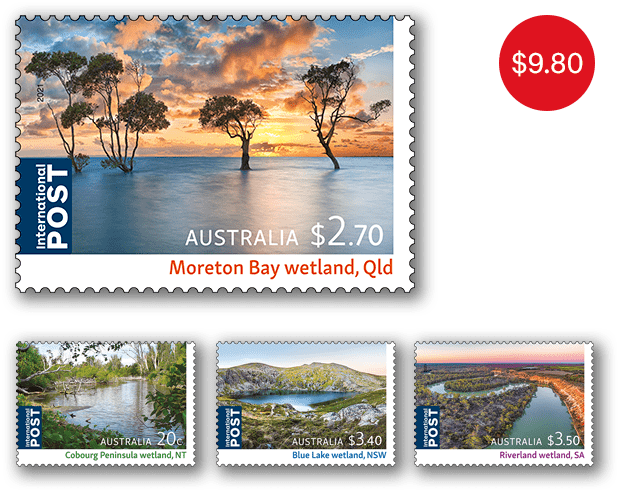
Stamp pack:
The Ramsar Wetlands stamp pack contains all four stamps from the stamp issue presented in high quality folder
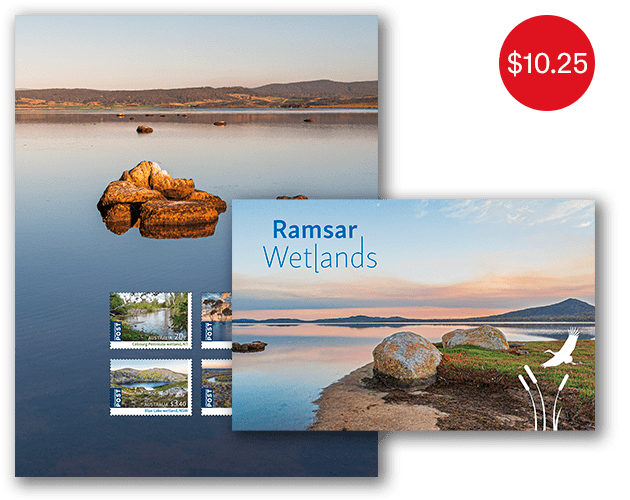
Sheetlet of 5:
This booklet contains 10 x $2.70 Moreton Bay wetlands, Qld International self-adhesive stamps from the Ramsar Wetlands stamp issue.
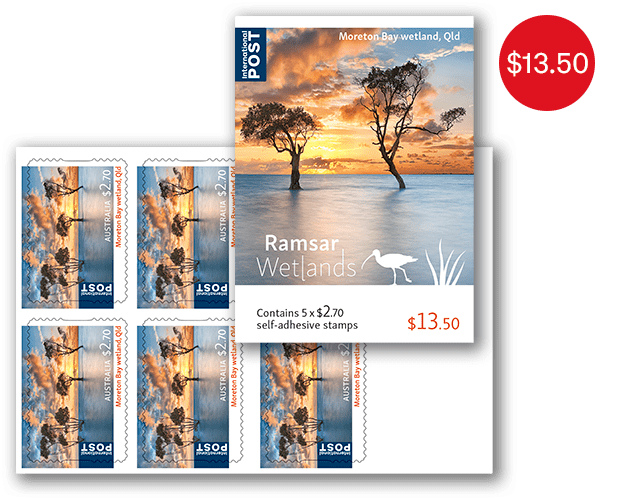
Maxicard set:
This maxicard set contains the four maxicards from the Ramsar Wetlands stamp issue.
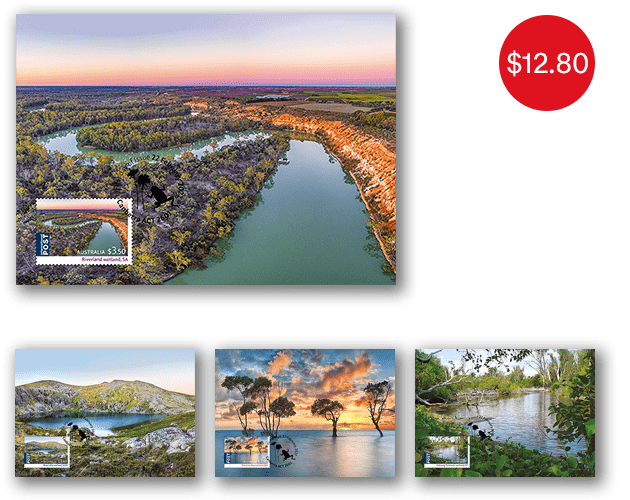
- Set of stamps
- Stamp pack
- Sheetlet of 5
- Maxicard set
Additional products:
- Gutter Strip of 10x 20c Cobourg Peninsula wetlands, NT International Stamps
- Gutter Strip of 10x $2.70 Moreton Bay wetlands, Qld International Stamps
- Gutter Strip of 10x $3.40 Blue Lake wetlands, NSW International Stamps
- Gutter Strip of 10x $3.50 Riverland wetlands, SA International Stamps
- Pictorial Envelope for the Ramsar Wetlands Stamp Issue
- First Day Ramsar Wetlands Gummed Stamps Cover
- Sheetlet of 5x $3.40 Blue Lake wetlands, NSW International Stamps
- Sheetlet of 5x $3.50 Riverland wetlands, SA International Stamps
- Cobourg Peninsula wetlands, NT Postcard
- Moreton Bay wetlands, Qld Postcard
- Blue Lake wetlands, NSW Postcard
- Riverland wetlands, SA Postcard
This content was produced at the time of the stamp issue release date and will not be updated.

